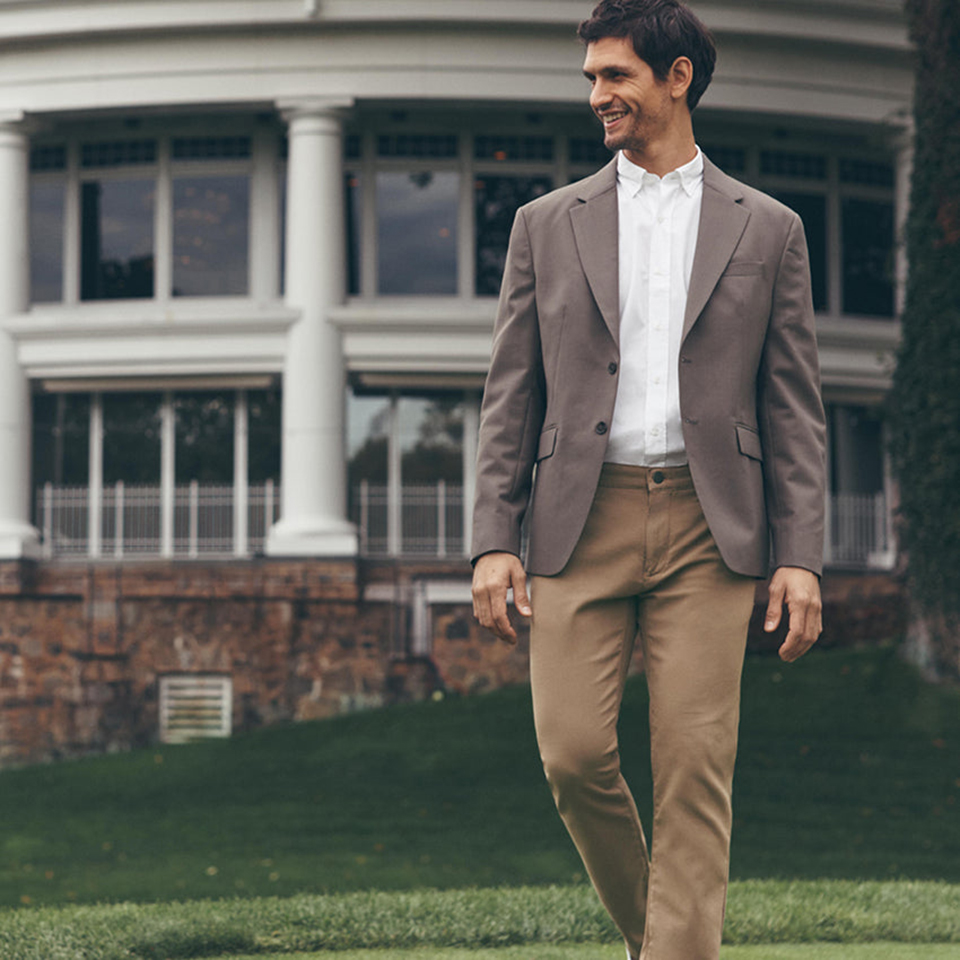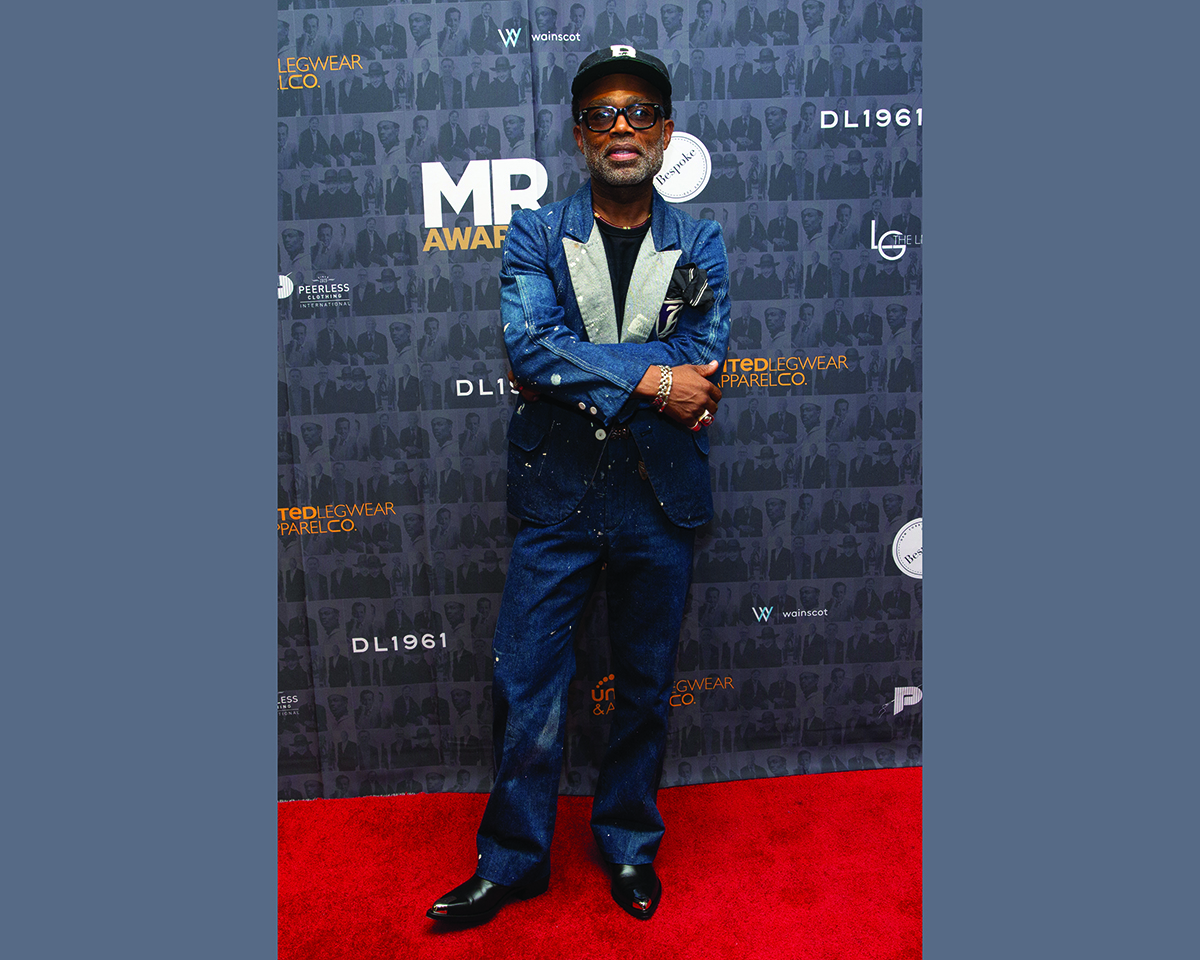FROM OUR AUGUST 2024 ISSUE: HOUSE OF THE DENIM

When Ouigi Theodore of The Brooklyn Circus accepted an MR Award in July, he took to the stage dressed head-to-toe in denim. If anyone ever put the “tuxedo” into the term “Canadian Tuxedo,” it was Theodore. Although the affair was not formal, per se, he conveyed an air of formality suffused with cool, providing a paradigm for how we all should be buying, merchandising, and wearing denim going forward: mindfully and completely put together.

As an example, a few seasons after 34Heritage launched, Ardie Ulukaya showed a few woven shirts with the line. The brand was still relatively new but was experiencing runaway success with its focus on specific fits, enhanced comfort, and a wide variety of washes. Retailers, however, were taking a pass on the wovens, leaning in to their tried-and-true sport shirt resources and only buying 34 as a classification. Fast forward to last season at the Dallas Men’s Show, where 34 Heritage’s Richard Binder was now displaying, yes, an enviable range of fits and washes in the brand’s core denim collection, but also a complete sportswear collection that included shirts, sweaters, knits, and outerwear. [Editor’s note: post press time I saw the collection in Dallas again, and it’s grown even further.] 34 Heritage—as an authentic lifestyle brand—had arrived.
Michael Engel at The Foursome in Plymouth, MN, says, “We do well with Peter Millar and Johnnie-O. Collections like 34 Heritage and Brax may have had a tougher time of it, but since the consumer appreciates their superior fit and performance fabric blends, they’ve grown to trust the brand and should now look at them for other wardrobe pieces.”
Trey Gonzales at Smith’s Men’s Store in Lake Forest, IL, points out that his store, in a resort community, is a bit of an anomaly because most of the guys in the community don’t even wear denim. “We sell khakis and casual 5-pocket styles, so denim is not a staple for us. But we do like to do deeper business with our existing partners.” He points out that one brand the store carries that was strictly denim offered a performance chino, now one of the store’s best-sellers.

As Mark D’Angelo from Liverpool Los Angeles, puts it, “Younger guys want to look more polished when they dress for work. Our customers love the brand, so we asked, ‘What else can we do?’ We started with a sweater, then added some cut-and-sewn and some layering pieces that all related back to denim. We saw traction on sportswear and the ability to grow the brand through our price/value proposition. Our department stores understand it. It’s another way to bring the guy into the store. Rothmans New York, for example, has set us up with similar brands in its Rothmans Next department to bring in an aspirational guy.”
It Ain’t Easy Being Blue
Leore Arik, at Joe’s, admits that moving into collection “…remains a huge challenge. Space constraints on the shop floors typically limit how much buyers can represent the brand’s full lifestyle. At Joe’s, we offer a full collection and aim to dress the jean customer from top to bottom. Being able to showcase the full collection so a customer can really outfit himself in the brand’s lifestyle is the goal.”

Another challenge is pointed out by DL1961’s Ugur Caymaz: maintaining brand identity and coherence across a broader range of products. “It requires consistent branding, design, and messaging across all categories to ensure a cohesive brand experience for consumers,” says Caymaz. “For spring/summer ’25, DL1961 will be offering a variety of tops, light and breathable cardigans, sweater vests, and short-sleeved polos.
“Retailers’ acceptance of brands as full lifestyle collections varies. Some appreciate the opportunity to offer customers a comprehensive range of products under one brand, as it can enhance their offerings and attract a broader customer base. However, other retailers may still prefer to pigeonhole brands into specific classifications based on their historical strengths and sales. They tend to stick with the brands they are familiar with, where they feel comfortable in their buying and selling practices.”
But trust, once earned, must be maintained, so retailers and brands alike are focusing on getting washes, color, fit, and performance just right for coming seasons. For now, that seems to be about appealing to men’s work wardrobes, as well as convincing them to try new styles.
Engel also points out that he’s seeing a trend towards medium and lighter washes, even bleach washes, for summer. “We’re selling lightweight models that offer versatility. We’re still selling mostly five-pocket models in colors—grays, blues, khakis—or patterned denim that pairs with sport coats. Jeans are the new dress pants. They can pair with a performance shirt and a sport coat and be dressy enough for just about anything.”
Alan Gibeley at Giblees in Danvers, MA, says, “Jeans continue with great sell-throughs for even luxury brands, including Jacob Cohen, with prices from $495 to $550! Basic dress pants have been a struggle, but corporate casual dress pants have been an area of growth. If the pant has stretch, contrast details, a heavy pic stitch, etc., it’s a winner.”
Peggi Jewel at Hudson Jeans says, “Emotional pieces, the styles that are not currently in his closet, have been performing well. Printed denim (like our Indigo Palm and Bandana styles), vegan short hooks-ups, as well as our Walker Kick Flares have been killing it for Hudson. While there was a lot of talk about ‘quiet luxury’ in the market this past year, our disruptive styles were clear winners.”
At Silver, CEO Suzanne Silverstein says, “We are continuing with a wide leg offering, a true fashion fit that we call ‘the big guy,’ in addition to our core bootcut and straight leg business. A sophisticated grouping of product that we have franchised as ‘Desk to Dinner’ from holiday 2024 will carry forward into spring/summer 2025. It’s evergreen and includes a brushed twill program in colors, and denim in deep, saturated indigo blue. The fabrics have stretch and recovery for all-day comfort but look polished enough for the office. These are perfectly appropriate for a nice dinner or cocktail event worn with a jacket, sweater, etc. That said, our overall assortment will continue to be about balance – we will learn from testing new programs while still offering our tried and true styles.
At Joe’s, Arik says, “We’re seeing a shift out of skinny into more straight, classic and relaxed fits. While skinny is still an important part of our business, the guy is loosening up and prefers relaxed fits and shorter inseams. We are launching rigid denim this fall/ holiday since we saw our buyers gravitate toward authentic, vintage-inspired washes in these new relaxed fits. For spring/summer, we will continue focusing on these trends while also introducing more cropped, straight-leg denim and trousers. Woven tops are always an important category in the denim business, but knits for men are taking a huge market share, particularly knit polos for spring/ summer and cozy pullovers for fall/ winter.”
Building Trust
To keep growing business, we offer denim merchants a few suggestions:
- Continue to build brand trust by focusing on performance and sustainability. Customers do care about comfort and saving the planet.
- Men are creatures of habit. Challenge guys to try new silhouettes, especially those from trusted brands. Show them how to put them together through display and photography, pairing new silhouettes with everything from T-shirts to sport coats, and demonstrate versatility.
- If you’re not partnering with brands for in-store events in the denim department, start nowfit forumforum or a wash demonstration from your road rep will provide sales associates with handy selling informtion, and help build relationships and trust with the end consumer.


